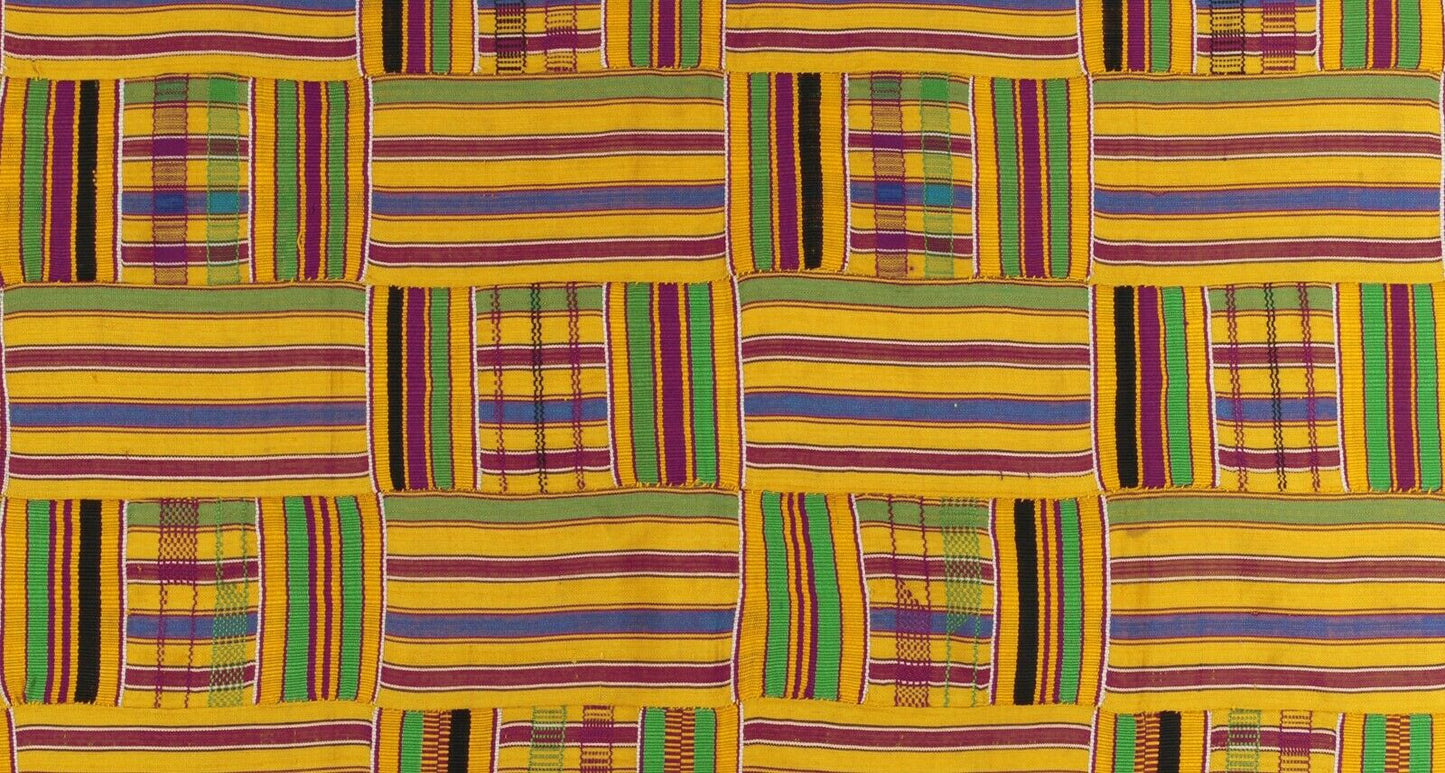Tribalgh
Vintage Handwoven Ashanti Kente Cloth 59¼″×38″ – 1960s–70s Woman Size
Vintage Handwoven Ashanti Kente Cloth 59¼″×38″ – 1960s–70s Woman Size
Item number:
SKU:SD-31155
Check shipping cost
Check shipping cost
Standard shipping cost for this item is $ 14.95
Insured "AIR MAIL" anywhere in the world.
Delivery time for Europe is 7-14 working days.
Delivery time for USA and the rest of the World is 14-21 working days.
We combine shipping on multiple purchases!
DHL option available for faster delivery ( 2 - 4 working days ) to all over the world.
During your checkout you will be able to see cost and select DHL option.
FREE upgrade to DHL for orders over $ 200
Couldn't load pickup availability
Handwoven Ashanti Kente – Authentic Vintage Cloth (Woman Size)
Experience the beauty of authentic, vintage Handwoven Ashanti Kente, crafted by skilled weavers in Kumasi, Ghana. Dating to the 1960s–1970s, this ceremonial cloth is a testament to tradition and artistry.
- Size: 59 ¼″ × 38″ (150 cm × 96 cm) – Woman size cloth
This high‑quality piece is in very good condition for its age, with minimal wear: one small hole and a few minor stains. These subtle imperfections speak to its authentic use and rich history.
The cloth was woven on a traditional horizontal treadle loom. Narrow strips were skillfully joined to create this stunning ceremonial cloth, reflecting weeks or even months of craftsmanship depending on the complexity.
Why This Ashanti Kente Cloth Is Special
- Ceremonial cloth steeped in Ghanaian Ashanti tradition
- Visual expression of history, ethics, philosophy, moral values, and oral literature
- Historical piece from the 1960s–1970s, rooted in 17th‑century heritage
- Functional and decorative a collector’s treasure and stunning wall hanging or textile cover
Embrace a genuine piece of African heritage and artistry this vintage Handwoven Ashanti Kente cloth is more than just a textile; it’s a living story.
About Ashanti Kente Cloth
Ashanti Kente originated in the Ashanti (Asante) Kingdom of Ghana in West Africa. Handwoven on horizontal treadle looms, the narrow strips are meticulously sewn side‑by‑side to form the full cloth. Traditional materials include cotton or rayon, while rarer, luxurious versions feature silk – a symbol of wealth and prestige.
The meanings woven into the cloth are rich and layered: each pattern (adowa, gye nyame, etc.) conveys moral values, historical events, or philosophical ideas. Color symbolism is vital too: gold for royalty and wealth, green for growth and renewal, blue for peace and harmony, black for maturity and spiritual intensity, and red for political or sacrificial aspects.
Ashanti Kente was originally reserved for Ashanti royalty and high-ranking individuals during ceremonies. Today, it remains central to weddings, graduations, festivals, and modern art and interior decor. While both Ashanti and Ewe peoples weave Kente, Ashanti designs are generally more restrained and geometric, whereas Ewe Kente often features lighter, flowing, and more open patterns.
This cloth is a window into centuries of tradition: from its 17th‑century origins to its cultural and contemporary significance truly a heritage piece.
Explore our Ewe Kente cloth collection
Discover more cloths & textiles at TribalGH
Share








